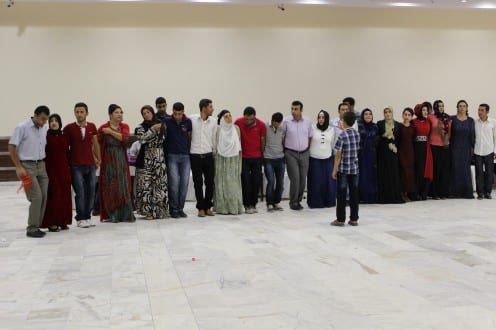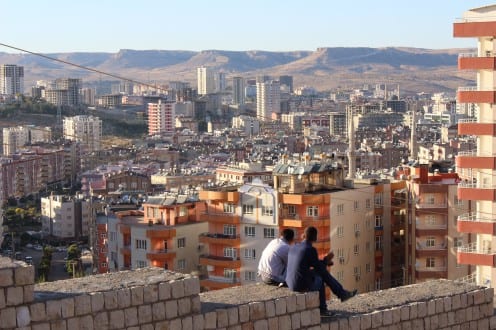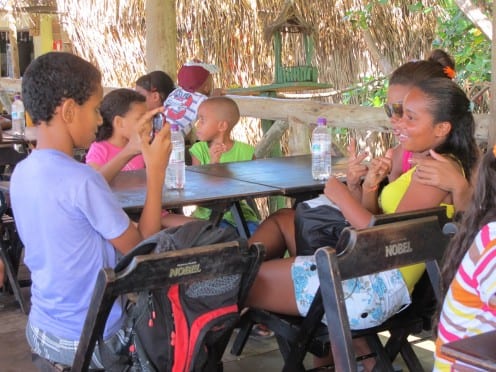The Future of Facebook: What will we learn from the study of Chinese social media?
By Xin Yuan Wang, on 29 January 2014

Image courtesy of emreterok, Creative Commons
China is a dreadful desert to Western social media giants such as Facebook and Twitter, however it is a tropical rainforest to many local species. It is curious to note that even though none of the participants in my field site use, or have even heard of Facebook or Twitter, the way they use Chinese social media such as QQ and WeChat provides an interesting parallel to the way UK teenagers in Danny’s study differentiate a range of social media in their daily life, even though as social media QQ, or WeChat are both significantly different from Facebook.
Among certain groups of Chinese people, like teenagers, QQ seems to be in stasis. For teens with relatively high education and social status that are more willing to try something new and urban middle-class, QQ is not cool at all, just as what Danny reported about Facebook in his previous blog article. It is not rare to find people who have used QQ for more than 10 years in China given QQ started to become popular almost 15 years ago. In fact, QQ could be considered Facebook’s predecessor and to some extent through the study of QQ’s development in China we may ‘foretell’ what will happen in ‘Facebook land’ in the future. Many of my participants have told me that around 10 years ago, QQ represented the coolest thing about urban life because rural migrants who came back to their village during Chinese New Year showed off that they had a QQ account in front of their stunned fellow villagers. After 10 years, when almost half of the Chinese population have QQ accounts, QQ numbers rather than mobile phone numbers are exchanged most frequently as permanent contact details (it is reported that people change their mobile phone much more frequently than their QQ account). QQ has lost its association with trendy or cool things, especially for urban Chinese people who want to escape from the ‘hustle and bustle’ QQ land which somehow has been associated with rural Chinese. On one hand, some people report that they use QQ less and less in recent years since Wechat’s audio message is more fun and convenient, and WeChat seems to be more in line with urban life. Some report that their closest friends and frequent contacts all moved to WeChat. On the other hand, people admitted that they would always come back to QQ when they wanted to catch up with long-lost relationships, such as old classmates or previous colleagues. As one informant put it, those contacts “didn’t move to other social media,” but remain in the “old home” of QQ. Those contacts may also have started using WeChat or other social media, but from my participants’ perspectives, they ‘belong’ to QQ. These friends may not have updated their social media details because of sparse communication, or are regarded a part of ‘past old days’ in one’s mind and QQ is the PLACE to go.
That is to say, people didn’t quit QQ because of their engagement with other social media. Rather, QQ survives time and thus obtains a ‘senior’ status, something like an old friend who has witnessed one’s ups-and-downs in life even though they may only meet once a year. QQ may also be regarded like one’s birthplace, which my rural migrant informants only visit during Chinese new year but always remains as one of the most import places in their lives. People don’t dump QQ, but keep it, and use it in a different way.
So the quick conclusion is QQ seems to be in stasis among certain groups of people not because of ‘being QQ’, but because of the law of ‘nature’ – here let me call this the nature of social media. And it also makes sense if one replaces “QQ” by “Facebook” in this argument.
And what is the nature of social media? You may need a bit more patience to read through the following academic ‘block’ to get a clearer picture:
First, stuff becomes more than the material after being used by people. For example the pen from your passed-away grandpa is to you by no means equal to any other pen which was produced on the same factory assembly line. If we have to use jargon, we call the process ‘objectification’ where an object consumed by people is domesticated and becomes part of the person and their relationship to others. That is where material culture starts, and the context in which we study digital technology. Digital technology, as a form of material, is no more sophisticated or mediated than any other object in terms of the relationship between material and human beings. Having said that, however, it is worthwhile to highlight the uniqueness of social media in the way that social media show the relationship between the digital and social relationship in a more visible and obvious way. That is to say, without people’s engagement and usage, social media is next to nothing. In a way, ‘Facebook’ and ‘QQ’ are only half finished goods before being used by people. Social media is produced through the consumption, as the terminology ‘prosumption’ suggested. Thus, it is safe to say social media is highly entangled with the ‘self’ and personal relationship to the degree that it somehow grows with the person and has its own life (Gell’s theory of ‘agency’ also shed light on this argument).
Furthermore, the concept of ‘polymedia’ describes another feature of social media. Each social media platform finds its niche in specific personal relationships and people take moral responsibility for their choice of different social media. In the case of ‘Facebook’, as Danny suggested, at the moment when people got friend request from their mother, the social medium is transformed into a family-orientated place rather than the place where people share secrets with their close friends. Also the concept ‘remediation’ helps to illustrate the way how certain social media (like QQ and Facebook) become ‘old’ because of the development of other social media. Dialectically, there is no so-called old or new social media without the comparison with others, that is to say people tend to re-define certain social media in the context of polymedia.
Even though my research is still unfinished, let me ‘jump to the conclusion’ and put my incomplete version of ‘the nature of social media’ here: First, social media as a social agent grow with the person and own their own lives. Second, social media were applied and valued by people in a context of polymedia.
Having discussed the nature of social media, then, let’s go back to my argument from the beginning – QQ seems to be in stasis among certain group of people not because of ‘being QQ’, but because of the law of ‘nature’, and so does Facebook. It is important to not treat social media as functional technology like we would computers. In terms of technology, new social media are not more advanced than pre-existing ones. It makes sense to say that today’s computers have taken the place of the early bulky computer, whereas we can’t say that a certain social medium is dead completely because its users turn to new ones and use others more actively. The situation in practice is like the way people treat friendship and the attitude toward one’s birthplace. From time to time, my participants in this Chinese town used “old friend” or “lao jia” (hometown) to describe their QQ profiles. For some of them, the usage of WeChat is more frequent and active than the usage of QQ. They report and I have observed that WeChat is more for recent contacts one meets in face-to-face situations, and generally speaking closer friends in a smaller circle. QQ on the other hand is used to keep up with all kinds of friends, acquaintances, and communities (QQ offers a group function, such as ‘class group’ used in one middle school) that one has accumulated over a relatively long term. In some cases QQ has become some people’s digital legacy where they keep the ‘silly self’ of 10 years ago. As one of my informants said she won’t use QQ to communicate with her new friends anymore since “on QQ you will encounter a little girl of 10 years ago”, however it is always good to view that ‘self’ in the past as it remains alive on QQ. QQ has become the PLACE, the legacy. Each generation, each human being owns their own history, and in the digital age, social media have become the place people store their history, and where old friends and memory dwell. I have witnessed it already in the usage of QQ among Chinese people and I don’t see any reason why Facebook will not follow suit.
Finally, the findings in China, with the absence of Facebook, actually reinforced our essential argument that the study of digital anthropology and this GSMIS project go beyond specific usage of a certain social medium. Social media usage is the point of entrance which allows our digital anthropologists to look into, understand and interpret the social relationship and the relationship between people and technology in different cultures and societies in the digital age.
 Close
Close













